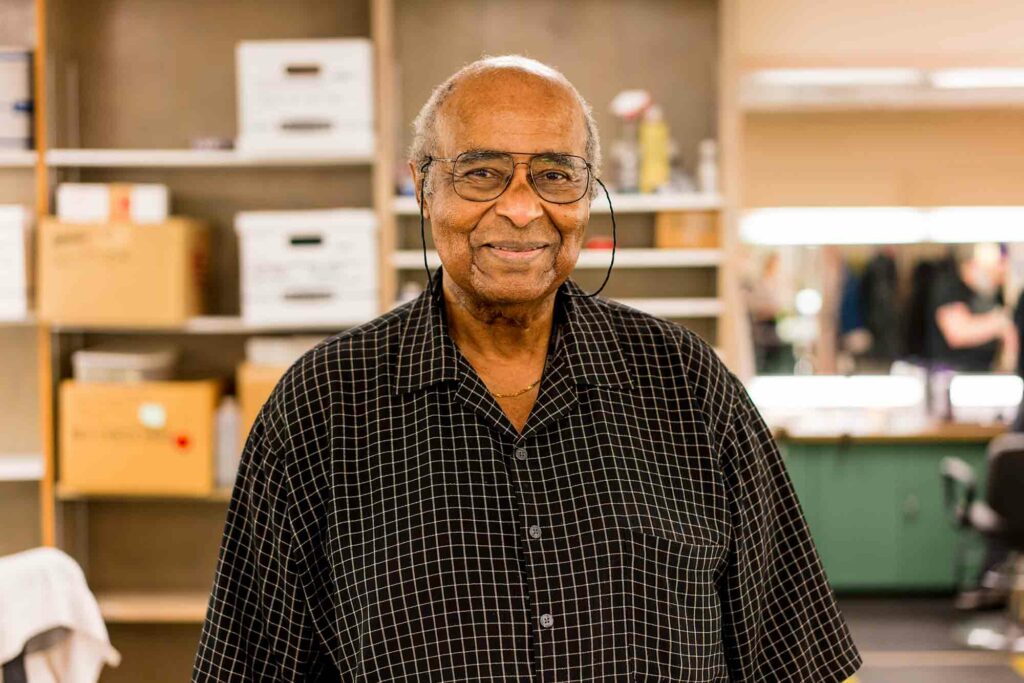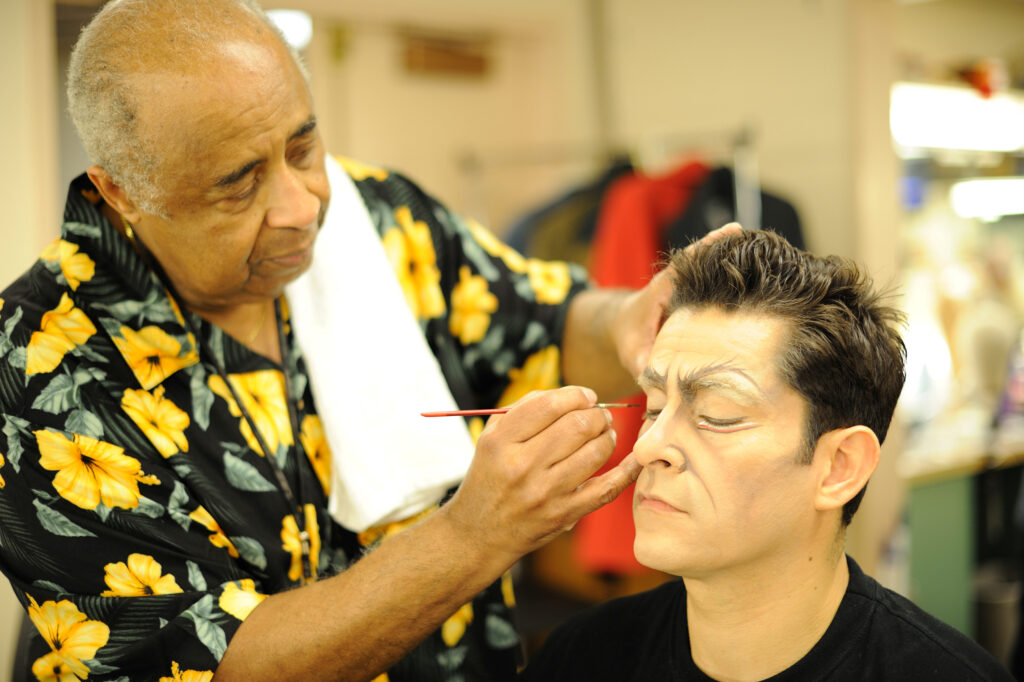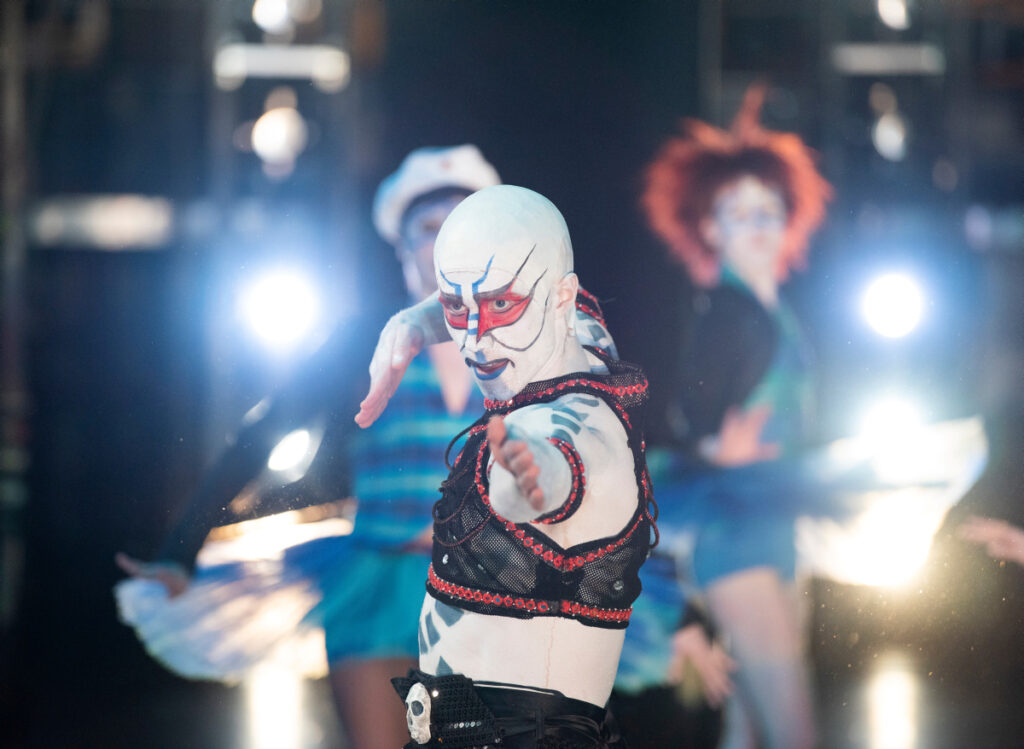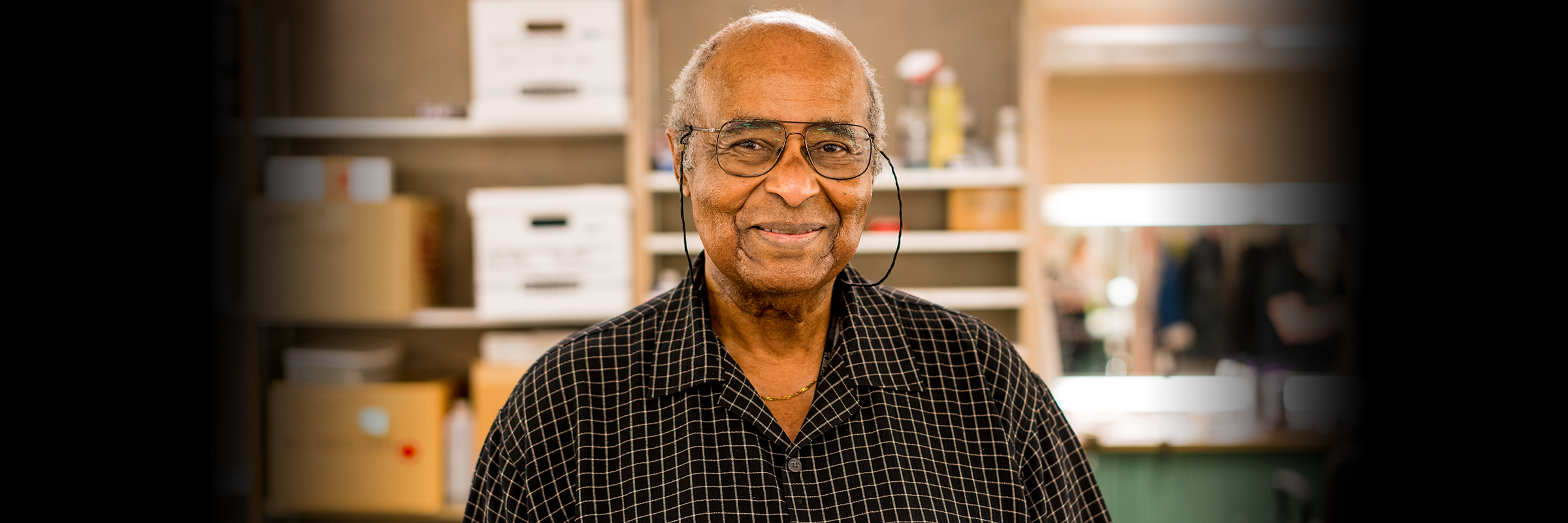Q & A with Richard Battle
SF Ballet’s Beloved Head of Hair & Make-up Retires
Head of Hair and Makeup Richard Battle retired from SF Ballet at the end of the 2019 Season. A beloved fixture backstage, Battle joined SF Ballet more than 40 years ago. Trained as a watercolorist, he taught at Mills College and has designed costumes and scenery for companies in the Bay Area and beyond.

How did you get started in theater?
I grew up in Michigan and studied to be a painter and artist. As a freshman at Wayne State University, I wanted to sign up for art classes, but seniors had priority. So I found basically the same classes in the drama department. One smell of the greasepaint, and it was all over.
One of the faculty members was a great scenic designer but was colorblind. After seeing my work, another professor told him I knew color and could take on his sketching and coloring. So that’s what I did for four years. I loved it.
What did you do after college?
I had planned to go to France to pursue watercolor. Instead, I was drafted into the Vietnam War. I was assigned to Intelligence and sent to Korea. They saw I had training in stagecraft and design and asked me to design for military shows. I did so for the two years I was in the military, along with Intelligence work.

What brought you to the Bay Area?
I’d fallen in love with California on my way to Korea. They called it the Golden State and they weren’t lying. I decided to come back for grad school at San Francisco State University. I designed some shows for the Lamplighters Music Theatre. The head of the dramatic arts department at Mills College approached me after a show. Their designer was retiring. I was hired in 1972‚ and stayed for more than 30 years, teaching costume and scenic design for the theater.
How did you start at SF Ballet?
When I was in grad school, I would come with my sketchpad and draw the dancers. Michael Smuin saw my work and asked me to design costumes. I did a few designs, but Mills took most of my time, so I had to decide what to focus on. I also started working in the makeup department. I had learned a lot about the structure of the face at Wayne State, and my training in painting helped because of my knowledge of color. Makeup allowed me to continue at Mills, whereas designing was just too much.
When I started in the makeup department, we had a really tough manager. One Sunday, I had a show but didn’t know it was at two o’clock instead of eight. I showed up at six o’clock to find out there was no show. When I called the manager, he said, “If you’re ever late again, you’ll never work in this building again.” I haven’t been late since. Ever.

What are the more challenging shows?
The Little Mermaid is a back breaker. This is why I say I love the dancers. The men and women who dance the shadows and the mermaids are covered in white paint. The first time we did Mermaid, we sprayed the makeup on. Everybody hated it—they had to put goggles on, so it wouldn’t get in their eyes. This time, I decided to ask them to paint their bodies themselves. A group of men came in, and all started to put on body makeup. Before I knew it, they had all lined up and each was doing another’s back. I got some special brushes for them so they could cover the back efficiently. And it worked!
What are the more rewarding ballets?
Helgi has done some gorgeous ballets. I like working with him because he listens. For example, I’ll say, “This is the design that was presented. We should cut back on some of the curl, because it didn’t exist at that time.” He can hear that and adjust. Some people can’t.
“I found heaven on earth in terms of work. When you find that, hold on to it. I’ve been proud of everything that I’ve done, and proud of all the people that I’ve worked with.”
Any performances that stand out?
When we were doing the Dance in America series [on PBS], they came out to film performances. Those are fun. You paint with a motion picture approach: basically, everything is softened, because the camera’s going to zoom in, and you don’t want the dancers to look like they’re in the film The Red Shoes.
What are you proudest of?
Being able to work with everyone from management on down. And the fact that I was able to last this long. One of the great things about this Company is that you can go to someone if you have a problem, and they’ll hear you. They may say, “I can’t do anything about that,” or “I’ll see what we can do.” But there’s that opportunity.
What will you miss the most?
I’ll miss the people who I have come to love: the dancers and the people I work with.
What will you do next?
I’ll paint watercolors. And probably take some classes in acrylic painting. I paint still life and scenery, and I’ve painted some portraits. I think that if I concentrated, I would be good at portraits, because I’ve learned so much about the face by painting faces. That’s basically what I want to do with my life until it’s over.
Header image: Richard Battle // © Brandon Patoc








